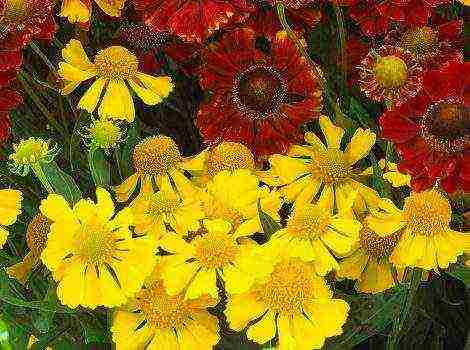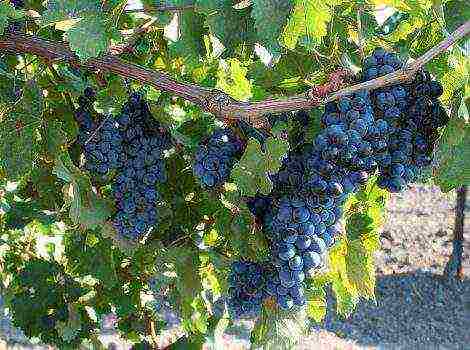Content
- 1 Spring and winter wheat varieties
- 2 What does hard wheat mean, their difference from soft
- 3 Which grade of wheat is the best
- 4 Crushed wheat: what is the name and how it differs
- 5 What does feed wheat mean?
- 6 Spring and winter wheat varieties
- 7 What does hard wheat mean, their difference from soft
- 8 Which grade of wheat is the best
- 9 Crushed wheat: what is the name and how it differs
- 10 What does feed wheat mean?
- 11 Spring and winter wheat varieties
- 12 What does hard wheat mean, their difference from soft
- 13 Which grade of wheat is the best
- 14 Crushed wheat: what is the name and how it differs
- 15 What does feed wheat mean?
Classes and varieties of wheat determine the physical and chemical differences between grains obtained from plants of different subspecies. There is a division into sowing groups of plants (winter or spring), food (soft or hard) and food varieties (wheat varieties 1-5). This separation makes it possible to separate cereals with some characteristic properties from others, which is necessary for convenient cultivation or processing in certain areas.
Spring and winter wheat varieties

This is a simple division that is important for agriculture, as it is used to choose when to start sowing, how to care and when to harvest crops from the fields. First of all, winter wheat differs from spring wheat in that it is sown in the fall and survives the winter right in the ground.
Winter wheat varieties
The vegetative period of winter wheat lasts 9 months, which is almost three times longer than that of spring wheat. The key components of nutrition for her are potassium, nitrogen and phosphorus. During the development and growth of spikelets, they make up about 50% of the substances absorbed by plants, before tillering - 30-40%, during the filling of grains - 20%.
Winter wheat seeds are sensitive to soil pH (6.5-7) and show the best yield in dark chestnut and chernozem soils. As a rule, winter wheat is sown in the second decade of September, which makes it possible to form from two to four leaves on the shoots before the onset of the snow season.
Popular winter wheat varieties:
- "Dewdrop Tarasovskaya";
- "Moscow-39";
- "Mironovskaya 65" and "Mironovskaya-66";
- "Kharkiv 105";
- "Nemchinovskaya-24".
Spring wheat varieties
Unlike winter wheat, spring wheat is less sensitive to the type and nature of the soil, but highly dependent on weather conditions. The vegetative period of these varieties of culture lasts 75-115 days, and falls strictly during the warm period of the year. Plants quickly develop a powerful root system, so they absorb nutrients much more actively. In the interval from germination to tillering, spring wheat varieties experience a lack of nutrition. Phosphorus deficiency is most pronounced, so it is important to recharge with fertilizers so that the final yield does not fall.
Common productive varieties of spring wheat:
- "Moscow 35";
- Voronezhskaya 10;
- Saratovskaya 55;
- Novosibirsk 67;
- "Orenburgskaya 2";
- "Kharkivska 46";
- "Saratovskaya 70".
What does hard wheat mean, their difference from soft
According to the chemical composition and physical properties of the grain, wheat is also divided into soft and hard varieties. The significant difference lies in the amount of gluten, the size of the fraction after threshing and how this affects the scope of use.
Durum flour consists of larger particles than soft flour. In addition, there is less gluten in durum flour, which prevents it from boiling too much. Therefore, durum wheat pasta belongs to the highest category - "A".Pasta made from soft flour for general purposes is labeled with the category "B", and from bakery - with the category "B".
 Photo: durum wheat pasta
Photo: durum wheat pasta
Flour from soft wheat has a higher starch content. This gives it good stickiness, which is very important for successful bread baking.
How to find out if durum wheat was used for the production of purchased pasta or not? You need to look at the markings that the manufacturer is obliged to put on the packaging.
For dishes in which it is very important to avoid overcooking the product, for example, for real Italian pasta, you need to buy products from the "A" group.
Which grade of wheat is the best
It is impossible to unambiguously call this or that type of wheat more useful. It all depends on the individual characteristics of the body and the availability of needs for certain nutrients.
Flour from soft wheat contains a lot of quickly digestible carbohydrates, therefore it has a high glycemic index and promotes rapid weight gain. Be careful with this type of bread and pastries if you have diabetes or a tendency to be overweight.
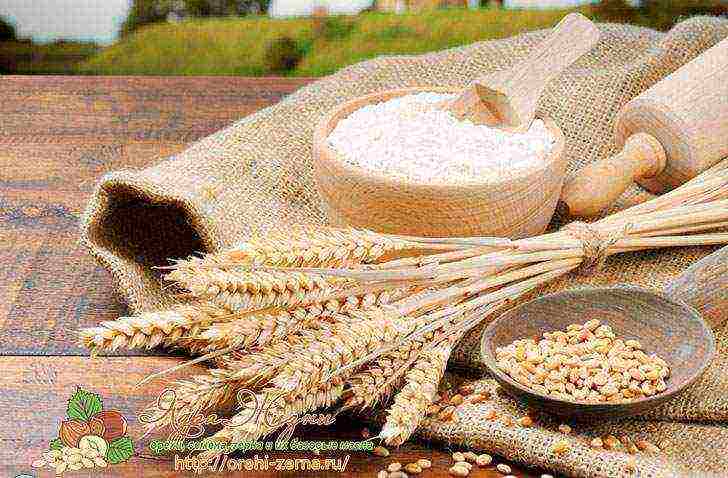
Durum wheat flour is not as rich in starch and gluten. The carbohydrates in its composition are not prone to rapid conversion into sugar, therefore they do not raise its content in the blood.
Larger flour particles and a high fiber content help improve digestion and eliminate ballast. However, this same feature can worsen the condition in acute diseases such as ulcers and gastritis, since digestion requires a large activity of the digestive juice.
In general, the presence of both types of product in the human diet is equally important, since soft bakery wheat flour acts as a high-quality source of energy, and solid flour contains more nutrients.
Crushed wheat: what is the name and how it differs
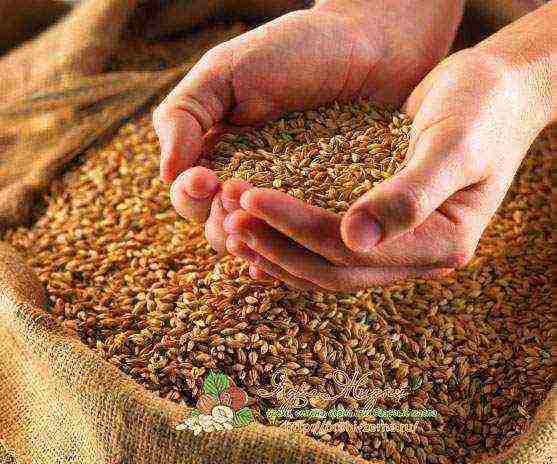
The crushed parts of a wheat crop have a different degree of crushing, and therefore are divided into different categories:
- Wheat groats are the coarsest way to get crushed grains. First they are cleaned and then polished well. There are two main varieties of crushed wheat groats: Artek and Poltava. They differ from each other in particle sizes and processing methods. In Poltava crushed wheat there are also four subcategories with numbers, which actually denote the grain size. All these types are produced in countries such as Armenia, Turkey, Georgia. Crushed wheat in this form is used to create culinary masterpieces such as puddings, casseroles, meatballs and, of course, porridge. Since the degree of grinding of such cereals is very small, it can be additionally ground.
- Semolina is milled wheat without bran with a medium degree of processing. In fact, semolina is also wheat groats, but with a fine grinding and a high level of purification. Since the grains are very small, the product cooks extremely quickly. Most often, semolina is made from hard varieties, but soft crushed wheat can also be found. There are also semolina mixtures, where the solid content reaches 20%.
- Wheat flour is the most crushed agricultural crop. Durum wheat produces flour used to make bulgur and couscous. If the product is formed by hard grinding of soft wheat, flour will work fine for bread. But flour from a dwarf wheat species is used for crumbly baked goods.
Sometimes a common name is used to designate all crushed cereals - a chop. This is a crushed product, partially or completely freed from the shell. It is well absorbed and suitable for making milk porridge.
What does feed wheat mean?
Forage is a plant-based product for feeding livestock in an agricultural environment. This food base is obtained from the fifth grade of wheat, which has a weak grain, suitable only for concentrated feed.
If the wheat variety taken at the beginning contained a lot of cellulose, you can feed the horse and the horned ones. With a reduced content of this substance (that is, a soft wheat variety), fodder goes to feed pigs or birds.
Feed wheat is often included in compound feed because its energy value is quite high. In order to use the product for a longer time, it is first dried, and already in the cold season, it is given to animals.
 Photo: feed wheat
Photo: feed wheat
Feed wheat contains many nutrients and is inexpensive. To determine what sort of grain it is made of, you need to focus on the size of the particles: the larger it is, the better. Animals on such food grow quickly and give active offspring.
But you should not overuse forage, because it contains a lot of gluten and starch, which can cause stomach pains in cattle. And even fodder wheat, when eaten uncontrollably, provokes obesity. Best of all, if it will be no more than 25% of the basic diet of animals.
There are thousands of varieties of wheat, and there is hardly anything surprising in the fact of their existence: after all, this cereal is one of the most widespread on earth. The classification of diverse varieties of wheat includes the division into winter and spring crops. In addition, of the 22 types of wheat, wheat and durum are of industrial importance (Triticum sativa and Triticum durum, respectively). There are more durum varieties among spring wheat.
Properties of soft and durum wheatThere is a lot in common between both groups of varieties, however, the differences between durum and soft wheat, according to historians, were already familiar to the ancient world.
1. Flour from soft varieties has larger starch grains, it is more crumbly, contains less gluten. The bread crumbles from it and soon turns stale. Therefore, soft wheat varieties are mainly used for baking pastry.
2. On the contrary, durum flour is distinguished by small starch grains, it has a fine-grained consistency, it contains more gluten. She is called "strong", goes to the preparation of bread. Durum wheat varieties T. durum are used for the production of pasta.
Soft varieties, in turn, are subdivided into white and red-grain. Durum wheat varieties are grown in drier climates than soft ones. They prevail in Canada, USA, North Africa, and the countries of the former USSR.
Durum wheat is not as susceptible to air drought as soft wheat, but it does not tolerate a lack of moisture in the soil worse. Strong leaf growth requires a good moisture supply for durum wheat. In terms of yield, hard wheat varieties are inferior to soft ones.
Spring wheat: general characteristicsSpring wheat is cold resistant. Seeds of spring varieties are able to germinate even at a temperature of +1 ° C. In winter, the plant can withstand frosts down to -6 ° C. For ripening, a temperature of +12 - 13 ° C is sufficient. The growing season is from 90 to 110 days.
Despite its low heat demand, spring wheat gives a high yield only on a weed-free and well-fertilized field. Well cultivated soils with a weak and neutral pH environment (6 - 7) are suitable for planting. Compared to oats and barley, spring wheat has a less developed root system and a lower assimilation capacity. One of the characteristic features of spring wheat in the initial period is uneven seedlings. In addition, it has a low tillering energy, is oppressed by weeds, and is quite vulnerable to pests.
It is necessary to plant spring wheat varieties as early as possible (in the first 5 days of the beginning of field work). A delay in sowing, even by a week, will sharply reduce the crop yield by 30 - 40 ° C.
Some high-yielding spring wheat varietiesSaratov-70... Soft wheat. It is a kind of albidum variety.The spike is awnless, white, not pubescent, the grain is white. Mid-season, high-yielding variety, medium resistant to lodging. Resistant to head smut, less than albidum, afraid of powdery mildew and leaf rust. Stable high productivity allows Saratovskaya-70 to successfully compete in the Russian grain and seed market. The maximum yield is 44.7 c / ha.
Dobrynya ... Soft wheat. It is a kind of lutescens. The spike has awning processes at the apex, hairless, white, red grain. Mid-season variety. Produces consistently high quality grain, resistant to lodging and shedding. It is less affected by powdery mildew, as well as viruses and leaf rust. The collection of grain is, taking into account the conditions, from 15 to 40 kg / ha.
Kharkivska-46 ... The most common among spring durum wheat. It has a red spinous spike with non-pubescent scales, white grain. Mid-season, drought-resistant variety. Resistant to shattering and lodging. Weakly susceptible to infection by smut, leaf rust. Gives high yields. It is especially popular in Ukraine, the North Caucasus, Siberia, and the Central Black Earth Zone.
Meljanopus-26 ... Durum wheat. The spike is white with black awns, pubescent. The grain is white, very large. The variety is resistant to shedding, lodging. The drought resistance of the variety made it very popular in the arid zone of the Caspian steppe. Also common in Kazakhstan.
Winter wheat: general characteristicsWinter wheat needs fertile soil, but with good fertilization, it gives a large yield. She has a longer growing season than spring. Winter wheat varieties more efficiently use the moisture of precipitation (including winter). Fast growth helps to fight weeds well. For this reason, winter wheat has a higher yield than spring wheat.
To increase the yield of winter wheat, it is necessary to introduce into production frost-resistant, high-yielding varieties that give good grain quality.
Some common varieties of winter wheatMoscow-39... Soft wheat. Represents a variation of erythrospermum. Fusiform, medium density spike of white color with a straight spine. The grain is red. A mid-season variety with a growing season of 305 - 308 days. Standard level of winter hardiness. Resistant to lodging. Has genes for resistance to snow mold, septoria, hard smut. Differs in high gluten content, excellent baking qualities. International trials in Canada (1988 - 2000) recognized this variety as the best among winter wheat. The variety is intended for sowing in the Central Black Earth, Central regions.
Bezenchukskaya ... Soft wheat. It is a kind of lutescens. Medium density spike without awn, amber-brown rounded grain. A mid-season variety with increased winter hardiness. Resistant to shattering. Little is affected by powdery mildew and yellow rust, moderately resistant to brown rust. Yields consistently yields with high grain quality.
Nemchinovskaya-57 ... Soft wheat. The variety received gold medals at the exhibitions "Golden Autumn" (2010), "Day of the Russian Field" (2007). Variation of erythrospermum. White spinous ear, large red grain. Possesses high winter hardiness. Mid-season variety, resistant to lodging. Weakly affected by hard smut, brown rust, powdery mildew. The average yield is 69.2 c / ha on well-fertilized soil.
To obtain a high yield of little favorable climatic conditions, it is also necessary to select the optimal seed variety for a given region, when choosing which one should take into account several factors at once: frost resistance, drought resistance, exactingness to the type of soil.Only the use of varieties of a new generation, zoned for a given area, and, therefore, maximally adapted to its climatic conditions, makes it possible to obtain grain up to 70-85 c / ha with an average yield not exceeding 35-45 c / ha.
Today, the largest center for breeding new varieties for the chernozem zone of Russia is the Donskoy Zonal Research Institute of Agriculture, created more than 30 years ago in the village of Donskaya Niva, Tarasovsky District, Rostov Region.
Tarasovskaya spinous (2001). The variety is distinguished by high quality grain, it is recommended for cultivation in the Rostov and Voronezh regions and the Stavropol Territory, where it allows you to get grain up to 95 c / ha. Resistant to prolonged droughts, including during the formation of an ear, it is characterized by good grain completion.
Rosinka Tarasovskaya (2002). One of the highest-yielding varieties with a confirmed yield of 105.3 c / ha. The variety is distinguished by a low, stable stem, which allows using the maximum amount of nutrients for ear ripening; excellent frost-resistant qualities, increased resistance to diseases of grain crops, including rust. It responds to the introduction of nitrogen fertilization in the form of foliar feeding by increasing the yield and quality of the resulting grain.
Prestige (2002). The variety is distinguished by increased frost-resistant qualities; seedlings can withstand late spring frosts down to -13 ° C without snow cover; the confirmed yield is 98 c / ha. The variety is recommended for the central and eastern regions of the Chernozem region, characterized by late frosts: the Lower Volga region, the North Caucasus, Rostov and Voronezh regions.
Severodonetsk Jubilee (2003). A modern frost-resistant variety that can withstand a drop in soil temperature down to -10 ° C and an ice crust on the surface of the soil. The yield of the variety reaches 90 kg / ha; it is resistant to diseases, including rust. Recommended for cultivation in the Kuban, Rostov Region, Krasnodar Territory and the North Caucasus.
Spring Tarasovsky (2003). The variety has an increased yield (up to 100 c / ha) of high-quality grain, is winter-hardy, withstands long late spring frosts, and is suitable for growing in the southern regions of Russia, including the North Caucasus.
August (2006)... A high-yielding variety with a confirmed yield of over 86.5 c / ha, a record yield of 96.8 c / ha was recorded in 2005. Recommended for the regions of the Northern Don and Kuban. It is characterized by increased winter hardiness: with a poor snow cover, it is able to withstand late spring frosts without losing productivity. The stalk is undersized, does not exceed 89-99 cm, the ear is cylindrical with an average grain of red. The variety is characterized by high drought resistance, lodging resistance, leaf rust, powdery mildew and other common diseases of grain crops. Responsive to nitrogen fertilization, relatively undemanding to precise sowing dates. A valuable variety with a high protein and gluten content, one of the best varieties for cultivation in the Kuban and North Caucasus.
Governor of the Don (2006). A high-yielding variety with a potential yield of 102 c / ha, the average yield of the variety exceeds 45 c / ha, the confirmed yield when cultivated in the Kuban is 95.9 c / ha. The variety has good frost-resistant and high heat-resistant qualities, well tolerates ice crust and late spring frosts. Adapted to the climatic conditions of the Stavropol Territory, the North Caucasus, the Central Black Earth Region, especially the Rostov and Belgorod Regions. It is distinguished by a semi-erect, medium-sized bush with a height of 65 to 94 cm with a white cylindrical spike, the grain is characterized by good baking qualities.Among the shortcomings, one can note insufficient resistance to leaf rust, snow mold, powdery mildew and other diseases of cereals.
Don 105 (2008). One of the new varieties of winter wheat, bred specifically for the Lower Volga region, the North Don and the North Caucasus. Possesses increased frost-resistant characteristics; the plant is able to withstand severe short-term frosts up to 20 ° С in late autumn and spring periods, it is drought-resistant. The variety is characterized by a medium-sized stem up to 107 cm high, highly resistant to lodging, highly resistant to damage, leaf rust, dust smut and infectious diseases of grain crops. The potential yield of the variety exceeds 90 kg / ha. At present, the work on monitoring this variety has not been completed, however, the best indicators were obtained when grown on non-fallen predecessors.
Kamyshanka-3 (2009)... One of the last varieties bred specifically for the Lower Volga region with characteristic late spring frosts and low autumn temperatures in the absence of snow cover, which leads to the death of winter crops with insufficient cold resistance. Recommended for sowing in the Volgograd region, can also be cultivated in adjacent regions, including the Saratov and Rostov regions. This variety gives the best indicators when cultivated on chernozems and chestnut soils, as well as on brown soils of the steppe zone. The Kamyshanka-3 variety is characterized by a rather high growth, often reaching 110 cm, with a long, cylindrical spike. The average yield is rather low and reaches 30 c / ha; the maximum yield obtained in 2008 in the Volgograd region was 60 c / ha. The variety has increased resistance to low temperatures and high drought resistance, is practically not affected by septoria, but cases of hard smut and brown rust have been reported. Among the shortcomings, we can note the lower content of gluten and protein in the grain compared to the standard, especially with a strong lack of moisture in the soil.
Nemchinovskaya-57 (2009)... The variety is developed for cultivation in the Tula and Moscow regions; a record harvest of 68.5 c / ha was recorded in 2008 in the Moscow region. The plant is characterized by a short-to-medium stem up to 103 cm high with a spindle-shaped spike of medium density. The average recorded yield reaches 34-53 kg / ha. The variety is distinguished by good winter-hardy and frost-resistant characteristics, resistant to lodging, moderately resistant to drought, leaf rust and hard smut. The grain of this wheat variety is distinguished by its high baking qualities. Among the shortcomings, there is an instability to snow mold and powdery mildew.
Moscow-39 (2000)... One of the best varieties of wheat for the non-chernozem zone, combining at the same time the excellent quality of food grains with high yields, which allowed it to become the best in its category at the international exhibition in Canada. Variety Moskovskaya-39 is distinguished by an average stem height not exceeding 100-105 cm, excellent frost-resistant qualities, and the ability to withstand prolonged sub-zero temperatures in the presence of sufficient snow cover. The average yield of this variety is from 50 to 70 kg / ha. Moskovskaya-39 responds well to the application of nitrogen fertilizers during the growth period. The variety is quite resistant to short drought in the early spring period, resistant to lodging, brown rust, hard smut and powdery mildew, not affected by snow mold with septoria blight. The grain is distinguished by a high content of protein and gluten, which makes it possible to recognize this variety as one of the leaders in winter wheat in the Non-Black Earth Region. Recommended for cultivation in the Moscow region, as well as in other zones of the Non-Black Earth Region and the Central Black Earth Region of the country with a stable winter snow cover.
Galina (2005)... One of the high-yielding varieties developed for the Non-Black Earth Region, with a potential yield of up to 70 kg / ha. Recommended for sowing in the Moscow region, the Middle Volga region, the Volgo-Vyatka region. Winter wheat Galina is characterized by low growth (the average size of the stem together with the ear does not exceed 85-90 cm) and a strong stem, which leads to increased plant resistance to lodging. The grain is large, with a high protein and gluten content, which makes it possible to equate this variety with the most valuable domestic varieties of food winter wheat. The variety gives good yields at late sowing, is distinguished by high rates of frost and drought resistance, is not susceptible to brown rust, below average it is affected by hard smut, is slightly affected by powdery mildew. All these qualities, along with good indicators of flour strength and bread yield, give reason to believe that the Galina variety will be widely used for growing winter wheat throughout the Central Non-Black Earth Region.
Nemchinovskaya-24 (2006). One of the universal varieties that can be cultivated not only in the Non-Black Earth Region, but also in the Volga Region, Central Black Earth and Volga-Vyatka Districts, in the Urals and Altai. Nemchinovskaya-24 has a high potential yield, which is 110-130 kg / ha, with good quality grain with a high content of gluten and protein. The variety is very responsive to fertilization and, with timely fertilizing, dramatically increases the yield and quality of grain. The plant is characterized by a medium height (80-90 cm) and a cylindrical spike of medium length. The strong hollow stem gives the variety an increased resistance to lodging and a high index of frost resistance. At the same time, the resistance of the variety to most of the most common wheat diseases, such as brown rust, powdery mildew and dusky smut, allows it to remain one of the most common varieties for cultivation throughout central Russia today.
Moscow-56 (2008). One of the last varieties bred for the Non-Black Earth Region and recommended for cultivation in the Central and Volga-Vyatka regions with long and cold winters and a stable snow cover due to its increased resistance to prolonged low temperatures. The potential yield of this variety is about 90-100 kg / ha; during the competitive test, a yield of 72.1 c / ha was obtained, and the maximum yield was obtained in 2002 and amounted to more than 85 c / ha. Moskovskaya-56 is characterized by high and friendly seed germination, which makes it possible to obtain a significant indicator of productive stems on each square meter of crops. The average plant height does not exceed 100-105 cm; strong hollow stem provides good resistance of the variety to lodging: according to this indicator, Moskovskaya-56 exceeds the average for winter wheat. The variety is quite resistant to most diseases, including powdery mildew; grain has a high protein and gluten content, which allows it to be used in the production of bread and bakery products. For a high return of high-quality food grain, the variety requires mandatory feeding with nitrogen fertilizers in the amount of at least 90 kg / ha.
Wheat has been cultivated by man since time immemorial. It is a very rewarding culture that can be used for a variety of purposes. Previously, only the spring variety was used, today the winter variety has also begun to be in great demand. The resulting new varieties have high yields and excellent grain quality. Winter wheat varieties, their features and disadvantages will be described below in the article.
Main characteristics of winter wheat
Winter wheat is an annual plant from the Cereals family. It is sown in the ground usually in late summer or early autumn. The first shoots appear before winter, but they tolerate cold well. And after the end of winter, they continue to grow until they are fully ripe.At the same time, this species matures much earlier than the spring one. Therefore, it is popular and therefore breeders from different countries have developed a lot of winter varieties over the past few decades.
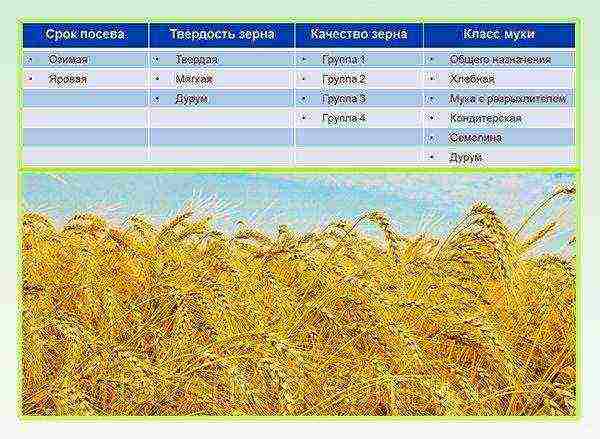
Wheat classification
It is important to note that there are soft and hard winter wheat varieties.
- Hard varieties prefer drier climates. Their stem is thick, the grains are small, hard, yellow or brown in color. The flour is fine-grained with a large proportion of gluten. Used for making pasta.
- Soft species are grown in humid climates. The stalk is thin-walled, the grains are glassy, mealy, the color can vary from white to dark brown. Wheat flour of this subspecies is crumbly and thin. It is used in the production of bread and confectionery.
The best varieties of winter wheat
Over the past few years, the best varieties of winter wheat have been developed, growing in the middle, southern and northern regions. They are fruitful, produce high quality grain, and are resistant to frost and some diseases.
Detailed description and characteristics of the most popular varieties of winter wheat:
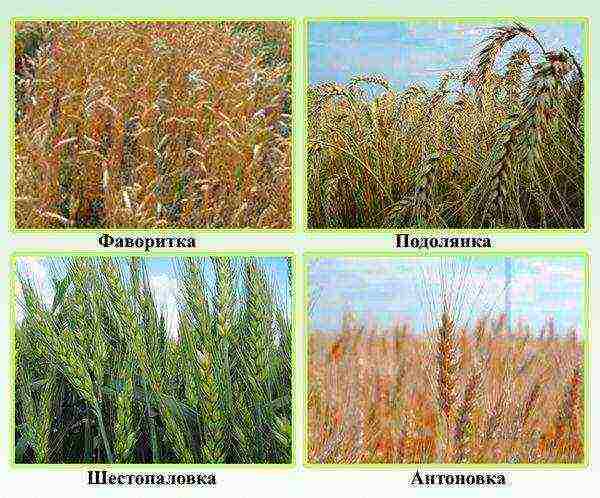
The best varieties of winter wheat
- "Favorite" - a variety of soft wheat. Ripens in 283-287 days. The plant is medium-sized. The weight of the seeds is 0.038-0.043 g, the fiber content is 31-32%. Can withstand severe frosts, but not very drought tolerant, timely watering is also extremely important. Productivity 96-107 kg / ha.
- "Podolyanka" was established in 2003 in Ukraine. Ripens in 305-310 days. The length of the stem with the ear is 95-99 cm. The grains are egg-shaped, red, weighing 0.044-0.045 g each with a high fiber content - 32-36%. The plant is resistant to frost and drought. Productivity 60 kg / ha.
- "Shestopalovka" was introduced in 2007. Refers to the soft variety. Grows up to 85-90 cm in height. Ripening period 280-285 days. Spikelets of dry grass color. The weight of one grain is 0.042-0.044 g, it contains up to 30% fiber, and 14% protein. Productivity 7-8.5 t / ha. The advantage is resistance to frost, overripe, shedding ears, drought, lodging, diseases.
- Antonovka Ukrainian winter wheat variety, bred in 2008. Differs in rapid growth - 280-285 days before full maturation, survival rate in different territories. The plant is medium-sized, up to 96 cm, it grows very densely. Spikelets are white, without pubescence. The grain weight is 0.036-0.044 g, depending on climatic conditions. It is immune to a complex of phyto-diseases. The varieties survive frosts and droughts without any problems.
- "Kuyalnik" - a variety of Ukrainian breeders, Can give up to 100 c / ha of crop. One grain weighs up to 0.042 g, egg-shaped, yellow. It is grown in the northern regions, as it is not afraid of frost.
The varieties "Solokha" (yield 80-90 c / ha), "Odessa 267" (72.3 c / ha), "Kherson bezostaya" (57.6 c / ha) are also in great demand.
What are the most persistent varieties?
Cold resistance of winter wheat plays a key role when choosing a variety. If in warm regions this indicator is not important, then in the northern regions the integrity of the harvest for the next year depends on it.
Ukrainian breeders played an important role in the creation of winter-hardy varieties. They were the ones who brought out the world famous "Kharkovskaya 96", "Kharkovskaya 105". They are not picky about growing conditions, they can endure very severe frosts. Moreover, they are grown even if sowing is delayed. In some cases, they are sown after sunflower, and this, as you know, is the worst predecessor of cereals! Under such critical conditions, these varieties can yield a yield of 4-4.5 t / ha.
This should also include "Harus", Astet "," Vasilina "three more winter-hardy species of universal purpose. 8.0-8.6 t / ha is the average yield of each of them. This type of grain contains approximately 14.5% protein and 29% gluten.
As you can see, there is plenty to choose from. The above-described winter wheat varieties are a small, but the best share of all existing winter wheat varieties. The described varieties have shown themselves in the best way. They have been tested in different countries and meet the quality criteria.
Classes and varieties of wheat determine the physical and chemical differences of grains obtained from plants of different subspecies.There is a division into sowing groups of plants (winter or spring), food (soft or hard) and food varieties (wheat varieties 1-5). This separation makes it possible to separate cereals with some characteristic properties from others, which is necessary for convenient cultivation or processing in separate areas.
Spring and winter wheat varieties
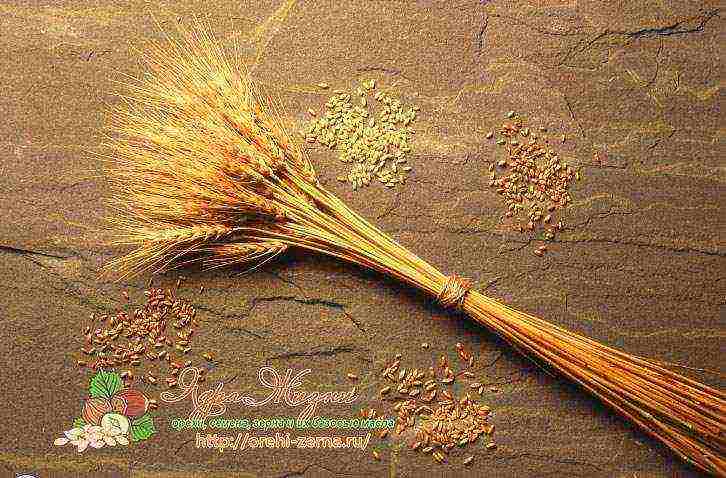
This is a simple division that is important for agriculture, because it is based on when to start sowing, how to care and when to harvest crops from the fields. First of all, winter wheat differs from spring wheat in that it is sown in the fall and survives the winter right in the ground.
Winter wheat varieties
The vegetative period of winter wheat lasts 9 months, which is almost three times longer than that of spring wheat. The key components of nutrition for her are potassium, nitrogen and phosphorus. During the development and growth of spikelets, they make up about 50% of the substances absorbed by plants, before tillering - 30-40%, during the filling of grains - 20%.
Winter wheat seeds are sensitive to soil pH (6.5-7) and show the best yield in dark chestnut and chernozem soils. As a rule, sowing of winter wheat is carried out in the second decade of September, which makes it possible to form from two to four leaves on the shoots before the onset of the snow season.
Popular winter wheat varieties:
- "Dewdrop Tarasovskaya";
- "Moscow-39";
- "Mironovskaya 65" and "Mironovskaya-66";
- "Kharkiv 105";
- "Nemchinovskaya-24".
Spring wheat varieties
Unlike winter wheat, spring wheat is less sensitive to the type and nature of the soil, but highly dependent on weather conditions. The vegetative period of these varieties of culture lasts 75-115 days, and falls strictly on the warm period of the year. Plants quickly develop a powerful root system, so they absorb nutrients much more actively. In the interval from germination to tillering, spring wheat varieties experience a lack of nutrition. Phosphorus deficiency is most pronounced, so it is important to replenish with fertilizers so that the final yield does not fall.
Common productive varieties of spring wheat:
- "Moscow 35";
- Voronezhskaya 10;
- Saratovskaya 55;
- Novosibirsk 67;
- "Orenburgskaya 2";
- "Kharkivska 46";
- "Saratovskaya 70".
What does hard wheat mean, their difference from soft
According to the chemical composition and physical properties of the grain, wheat is also divided into soft and hard varieties. The significant difference lies in the amount of gluten, the size of the fraction after threshing and how this affects the scope of use.
Durum flour consists of larger particles than soft flour. In addition, there is less gluten in durum flour, which prevents it from boiling too much. Therefore, durum wheat pasta belongs to the highest category - "A". Pasta made from soft flour for general purposes is labeled with category "B", and from bakery - with category "B".
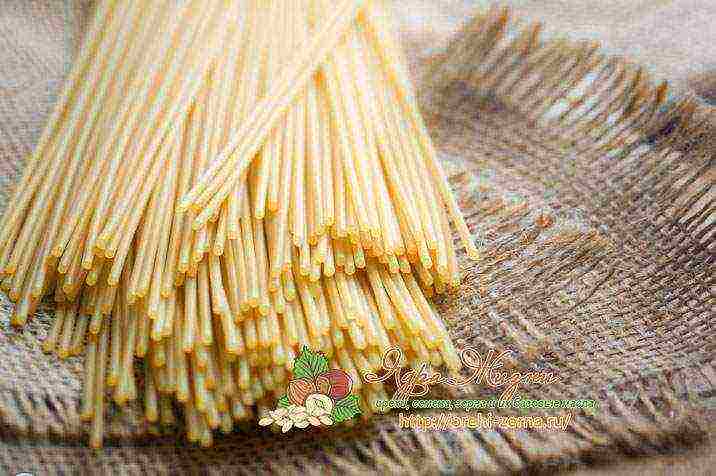 Photo: durum wheat pasta
Photo: durum wheat pasta
Flour from soft wheat has a higher starch content. This gives it good stickiness, which is very important for successful bread baking.
How to find out if durum wheat was used for the production of purchased pasta or not? You need to look at the markings that the manufacturer is obliged to put on the packaging.
For dishes in which it is very important to avoid overcooking the product, for example, for real Italian pasta, you need to buy products from group "A".
Which grade of wheat is the best
It is impossible to name one or another type of wheat unambiguously as more useful. It all depends on the individual characteristics of the body and the availability of needs for certain nutrients.
Flour from soft wheat contains a lot of quickly digestible carbohydrates, therefore it has a high glycemic index and promotes rapid weight gain. Be careful with this type of bread and pastries if you have diabetes or a tendency to be overweight.
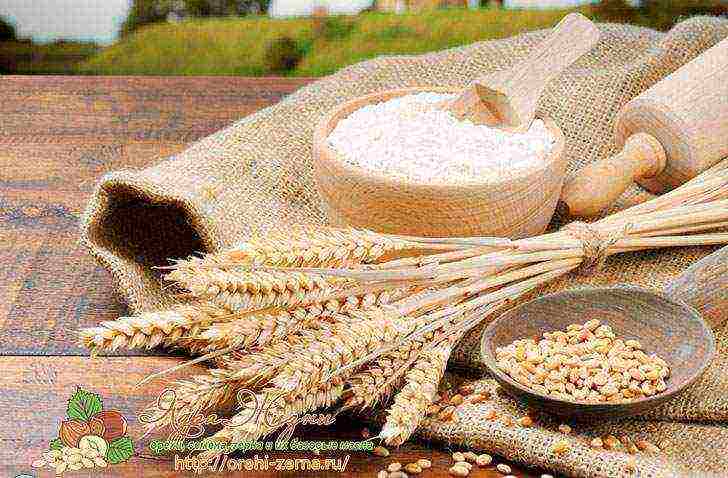
Durum wheat flour is not as rich in starch and gluten. The carbohydrates in its composition are not prone to rapid conversion into sugar, therefore, they do not raise its content in the blood.
Larger flour particles and a high fiber content help improve digestion and eliminate ballast. However, this same feature can worsen the condition in acute diseases such as ulcers and gastritis, since digestion requires a large activity of the digestive juice.
In general, the presence of both types of product in the human diet is equally important, since soft bakery wheat flour acts as a high-quality source of energy, and solid flour contains more nutrients.
Crushed wheat: what is the name and how it differs
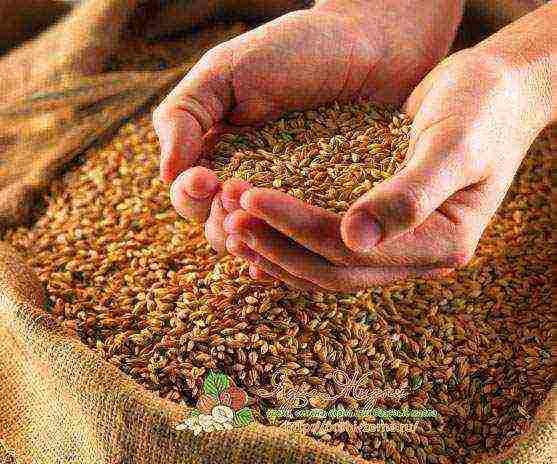
The crushed parts of a wheat crop have a different degree of crushing, and therefore are divided into different categories:
- Wheat groats are the coarsest way to get crushed grains. First they are cleaned and then polished well. There are two main varieties of crushed wheat groats: Artek and Poltava. They differ from each other in particle sizes and processing methods. In Poltava crushed wheat there are also four subcategories with numbers, which actually denote the grain size. All these types are produced in countries such as Armenia, Turkey, Georgia. Crushed wheat in this form is used to create culinary masterpieces such as puddings, casseroles, meatballs and, of course, porridge. Since the degree of grinding of such cereals is very small, it can be additionally ground.
- Semolina is milled wheat without bran with a medium degree of processing. In fact, semolina is also wheat groats, but with a fine grinding and a high level of purification. Since the grains are very small, the product cooks extremely quickly. Most often, semolina is made from hard varieties, but soft crushed wheat can also be found. There are also semolina mixtures, where the solid content reaches 20%.
- Wheat flour is the most crushed agricultural crop. Durum wheat produces flour used to make bulgur and couscous. If the product is formed by hard grinding of soft wheat, flour will work fine for bread. But flour from a dwarf wheat species is used for crumbly baked goods.
Sometimes a common name is used to designate all crushed cereals - a chop. This is a crushed product, partially or completely freed from the shell. It is well absorbed and suitable for making milk porridge.
What does feed wheat mean?
Forage is a plant-based product for feeding livestock in an agricultural environment. This food base is obtained from the fifth grade of wheat, which has a weak grain, suitable only for concentrated feed.
If the wheat variety taken at the beginning contained a lot of cellulose, you can feed the horse and the horned ones. With a reduced content of this substance (that is, a soft wheat variety), fodder goes to feed pigs or birds.
Feed wheat is often included in compound feed because its energy value is quite high. In order to use the product for a longer time, it is first dried, and already in the cold season, it is given to animals.
 Photo: feed wheat
Photo: feed wheat
Feed wheat contains many nutrients and is inexpensive. To determine what sort of grain it is made of, you need to focus on the size of the particles: the larger it is, the better. Animals on such food grow quickly and give active offspring.
But it is not worth overusing forage, because it contains a lot of gluten and starch, which can cause stomach pains in cattle. And even fodder wheat, when eaten uncontrollably, provokes obesity. Best of all, if it will be no more than 25% of the basic diet of animals.
To obtain a high yield of little favorable climatic conditions, it is also necessary to select the optimal seed variety for a given region, when choosing which one should take into account several factors at once: frost resistance, drought resistance, exactingness to the type of soil. Only the use of varieties of a new generation, zoned for a given area, and, therefore, maximally adapted to its climatic conditions, makes it possible to obtain grain up to 70-85 c / ha with an average yield not exceeding 35-45 c / ha.
Today, the largest center for breeding new varieties for the chernozem zone of Russia is the Donskoy Zonal Research Institute of Agriculture, created more than 30 years ago in the village of Donskaya Niva, Tarasovsky District, Rostov Region.
Tarasovskaya spinous (2001). The variety is distinguished by high quality grain, it is recommended for cultivation in the Rostov and Voronezh regions and the Stavropol Territory, where it allows you to get grain up to 95 c / ha. Resistant to prolonged droughts, including during the formation of an ear, it is characterized by good grain completion.
Rosinka Tarasovskaya (2002). One of the highest-yielding varieties with a confirmed yield of 105.3 c / ha. The variety is distinguished by a low, stable stem, which allows using the maximum amount of nutrients for ear ripening; excellent frost-resistant qualities, increased resistance to diseases of grain crops, including rust. It responds to the introduction of nitrogen fertilization in the form of foliar feeding by increasing the yield and quality of the resulting grain.
Prestige (2002). The variety is distinguished by increased frost-resistant qualities; seedlings can withstand late spring frosts down to -13 ° C without snow cover; the confirmed yield is 98 c / ha. The variety is recommended for the central and eastern regions of the Chernozem region, characterized by late frosts: the Lower Volga region, the North Caucasus, Rostov and Voronezh regions.
Severodonetsk Jubilee (2003). A modern frost-resistant variety that can withstand a drop in soil temperature down to -10 ° C and an ice crust on the surface of the soil. The yield of the variety reaches 90 kg / ha; it is resistant to diseases, including rust. Recommended for cultivation in the Kuban, Rostov Region, Krasnodar Territory and the North Caucasus.
Spring Tarasovsky (2003). The variety has an increased yield (up to 100 c / ha) of high-quality grain, is winter-hardy, withstands long late spring frosts, and is suitable for growing in the southern regions of Russia, including the North Caucasus.
August (2006)... A high-yielding variety with a confirmed yield of over 86.5 c / ha, a record yield of 96.8 c / ha was recorded in 2005. Recommended for the regions of the Northern Don and Kuban. It is characterized by increased winter hardiness: with a poor snow cover, it is able to withstand late spring frosts without losing productivity. The stalk is undersized, does not exceed 89-99 cm, the ear is cylindrical with an average grain of red. The variety is characterized by high drought resistance, lodging resistance, leaf rust, powdery mildew and other common diseases of grain crops. Responsive to nitrogen fertilization, relatively undemanding to precise sowing dates. A valuable variety with a high protein and gluten content, one of the best varieties for cultivation in the Kuban and North Caucasus.
Governor of the Don (2006). A high-yielding variety with a potential yield of 102 c / ha, the average yield of the variety exceeds 45 c / ha, the confirmed yield when cultivated in the Kuban is 95.9 c / ha. The variety has good frost-resistant and increased heat-resistant qualities, well tolerates ice crust and late spring frosts. Adapted to the climatic conditions of the Stavropol Territory, the North Caucasus, the Central Black Earth Region, especially the Rostov and Belgorod Regions.It is distinguished by a semi-erect, medium-sized bush with a height of 65 to 94 cm with a white cylindrical spike, the grain is characterized by good baking qualities. Among the shortcomings, one can note insufficient resistance to leaf rust, snow mold, powdery mildew and other diseases of cereals.
Don 105 (2008). One of the new varieties of winter wheat, bred specifically for the Lower Volga region, the North Don and the North Caucasus. Possesses increased frost-resistant characteristics; the plant is able to withstand severe short-term frosts up to 20 ° С in late autumn and spring periods, it is drought-resistant. The variety is characterized by a medium-sized stem up to 107 cm high, highly resistant to lodging, highly resistant to damage, leaf rust, dust smut and infectious diseases of grain crops. The potential yield of the variety exceeds 90 kg / ha. At present, the work on monitoring this variety has not been completed, however, the best indicators were obtained when grown on non-fallen predecessors.
Kamyshanka-3 (2009)... One of the last varieties bred specifically for the Lower Volga region with characteristic late spring frosts and low autumn temperatures in the absence of snow cover, which leads to the death of winter crops with insufficient cold resistance. Recommended for sowing in the Volgograd region, can also be cultivated in adjacent regions, including the Saratov and Rostov regions. This variety gives the best indicators when cultivated on chernozems and chestnut soils, as well as on brown soils of the steppe zone. The Kamyshanka-3 variety is characterized by a rather high growth, often reaching 110 cm, with a long, cylindrical spike. The average yield is rather low and reaches 30 c / ha; the maximum yield obtained in 2008 in the Volgograd region was 60 c / ha. The variety has increased resistance to low temperatures and high drought resistance, is practically not affected by septoria, but cases of hard smut and brown rust have been reported. Among the shortcomings, we can note the lower content of gluten and protein in the grain compared to the standard, especially with a strong lack of moisture in the soil.
Nemchinovskaya-57 (2009)... The variety is developed for cultivation in the Tula and Moscow regions; a record harvest of 68.5 c / ha was recorded in 2008 in the Moscow region. The plant is characterized by a short-to-medium stem up to 103 cm high with a spindle-shaped spike of medium density. The average recorded yield reaches 34-53 kg / ha. The variety is distinguished by good winter-hardy and frost-resistant characteristics, resistant to lodging, moderately resistant to drought, leaf rust and hard smut. The grain of this wheat variety is distinguished by its high baking qualities. Among the shortcomings, there is an instability to snow mold and powdery mildew.
Moscow-39 (2000)... One of the best varieties of wheat for the non-black earth zone, combining at the same time the excellent quality of food grains with high yields, which allowed it to become the best in its category at the international exhibition in Canada. Variety Moskovskaya-39 is distinguished by an average stem height not exceeding 100—105 cm, excellent frost-resistant qualities, and the ability to withstand prolonged sub-zero temperatures in the presence of sufficient snow cover. The average yield of this variety is from 50 to 70 kg / ha. Moskovskaya-39 responds well to the application of nitrogen fertilizers during the growth period. The variety is quite resistant to short drought in the early spring period, resistant to lodging, brown rust, hard smut and powdery mildew, not affected by snow mold with septoria blight. The grain is distinguished by a high content of protein and gluten, which makes it possible to recognize this variety as one of the leaders in winter wheat in the Non-Black Earth Region.Recommended for cultivation in the Moscow region, as well as in other zones of the Non-Black Earth Region and the Central Black Earth Region of the country with a stable winter snow cover.
Galina (2005)... One of the high-yielding varieties developed for the Non-Black Earth Region, with a potential yield of up to 70 kg / ha. Recommended for sowing in the Moscow region, the Middle Volga region, the Volgo-Vyatka region. Winter wheat Galina is characterized by low growth (the average size of the stem together with the ear does not exceed 85-90 cm) and a strong stem, which leads to increased plant resistance to lodging. The grain is large, with a high protein and gluten content, which makes it possible to equate this variety with the most valuable domestic varieties of food winter wheat. The variety gives good yields at late sowing, is distinguished by high rates of frost and drought resistance, is not susceptible to brown rust, below average it is affected by hard smut, is slightly affected by powdery mildew. All these qualities, along with good indicators of flour strength and bread yield, give reason to believe that the Galina variety will be widely used for growing winter wheat throughout the Central Non-Black Earth Region.
Nemchinovskaya-24 (2006). One of the universal varieties that can be cultivated not only in the Non-Black Earth Region, but also in the Volga Region, Central Black Earth and Volgo-Vyatka Districts, in the Urals and Altai. Nemchinovskaya-24 has a high potential yield, which is 110-130 kg / ha, with good quality grain with a high content of gluten and protein. The variety is very responsive to fertilization and, with timely fertilizing, dramatically increases the yield and quality of grain. The plant is characterized by a medium height (80-90 cm) and a cylindrical spike of medium length. The strong hollow stem gives the variety an increased resistance to lodging and a high index of frost resistance. At the same time, the resistance of the variety to most of the most common wheat diseases, such as brown rust, powdery mildew and dusky smut, allows it to remain one of the most common varieties for cultivation throughout central Russia today.
Moscow-56 (2008). One of the last varieties bred for the Non-Black Earth Zone and recommended for cultivation in the Central and Volga-Vyatka regions with long and cold winters and a stable snow cover due to its increased resistance to prolonged low temperatures. The potential yield of this variety is about 90-100 kg / ha; During the competitive test, a yield of 72.1 c / ha was obtained, and the maximum yield was obtained in 2002 and amounted to more than 85 c / ha. Moskovskaya-56 is characterized by high and friendly seed germination, which makes it possible to obtain a significant indicator of productive stems on each square meter of crops. The average plant height does not exceed 100-105 cm; strong hollow stem provides good resistance of the variety to lodging: according to this indicator, Moskovskaya-56 exceeds the average for winter wheat. The variety is quite resistant to most diseases, including powdery mildew; grain has a high protein and gluten content, which allows it to be used in the production of bread and bakery products. For a high return of high-quality food grain, the variety requires mandatory feeding with nitrogen fertilizers in the amount of at least 90 kg / ha.
Classes and varieties of wheat determine the physical and chemical differences between grains obtained from plants of different subspecies. There is a division into sowing groups of plants (winter or spring), food (soft or hard) and food varieties (wheat varieties 1-5). This separation makes it possible to separate cereals with some characteristic properties from others, which is necessary for convenient cultivation or processing in certain areas.
Spring and winter wheat varieties
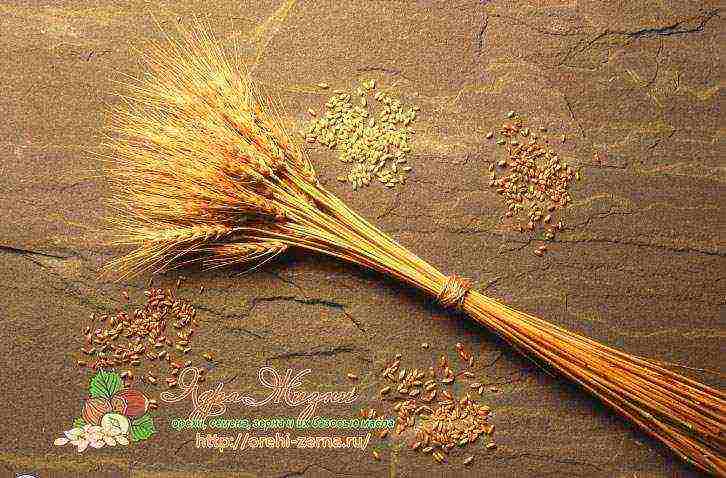
This is a simple division that is important for agriculture, since it is used to choose when to start sowing, how to care for and when to harvest crops from the fields. First of all, winter wheat differs from spring wheat in that it is sown in the fall and survives the winter right in the ground.
Winter wheat varieties
The vegetative period of winter wheat lasts 9 months, which is almost three times longer than that of spring wheat. The key components of nutrition for her are potassium, nitrogen and phosphorus. During the development and growth of spikelets, they make up about 50% of the substances absorbed by plants, before tillering - 30-40%, during the filling of grains - 20%.
Winter wheat seeds are sensitive to soil pH (6.5-7) and show the best yield in dark chestnut and chernozem soils. As a rule, winter wheat is sown in the second decade of September, which makes it possible to form from two to four leaves on the shoots before the onset of the snow season.
Popular winter wheat varieties:
- "Dewdrop Tarasovskaya";
- "Moscow-39";
- "Mironovskaya 65" and "Mironovskaya-66";
- "Kharkiv 105";
- "Nemchinovskaya-24".
Spring wheat varieties
Unlike winter wheat, spring wheat is less sensitive to the type and nature of the soil, but highly dependent on weather conditions. The vegetative period of these varieties of culture lasts 75-115 days, and falls strictly on the warm period of the year. Plants quickly develop a powerful root system, so they absorb nutrients much more actively. In the interval from germination to tillering, spring wheat varieties experience a lack of nutrition. Phosphorus deficiency is most pronounced, so it is important to replenish with fertilizers so that the final yield does not fall.
Common productive varieties of spring wheat:
- "Moscow 35";
- Voronezhskaya 10;
- Saratovskaya 55;
- Novosibirsk 67;
- "Orenburgskaya 2";
- "Kharkivska 46";
- "Saratovskaya 70".
What does hard wheat mean, their difference from soft
According to the chemical composition and physical properties of the grain, wheat is also divided into soft and hard varieties. The significant difference lies in the amount of gluten, the size of the fraction after threshing and how this affects the scope of use.
Durum flour consists of larger particles than soft flour. In addition, there is less gluten in durum flour, which prevents it from boiling too much. Therefore, durum wheat pasta belongs to the highest category - "A". Pasta made from soft flour for general purposes is labeled with category "B", and from bakery - with category "B".
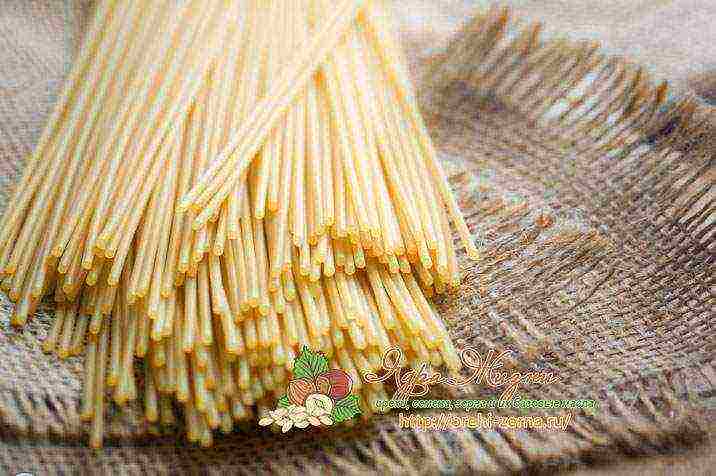 Photo: durum wheat pasta
Photo: durum wheat pasta
Flour from soft wheat has a higher starch content. This gives it good stickiness, which is very important for successful bread baking.
How to find out if durum wheat was used for the production of purchased pasta or not? You need to look at the markings that the manufacturer is obliged to put on the packaging.
For dishes in which it is very important to avoid overcooking the product, for example, for real Italian pasta, you need to buy products from group "A".
Which grade of wheat is the best
It is impossible to unambiguously call this or that type of wheat more useful. It all depends on the individual characteristics of the body and the availability of needs for certain nutrients.
Flour from soft wheat contains a lot of quickly digestible carbohydrates, therefore it has a high glycemic index and promotes rapid weight gain. Be careful with this type of bread and pastries if you have diabetes or a tendency to be overweight.
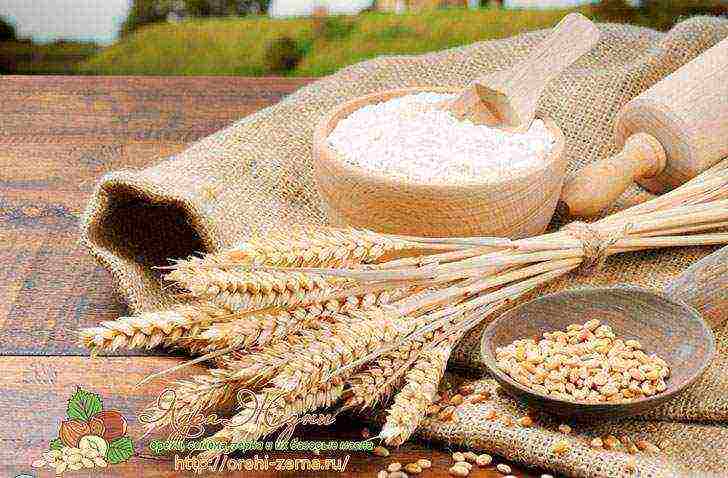
Durum wheat flour is not as rich in starch and gluten. The carbohydrates in its composition are not prone to rapid conversion into sugar, therefore they do not raise its content in the blood.
Larger flour particles and a high fiber content help improve digestion and eliminate ballast.However, this same feature can worsen the condition in acute diseases such as ulcers and gastritis, since digestion requires a large activity of the digestive juice.
In general, the presence of both types of product in the human diet is equally important, since soft bakery wheat flour acts as a high-quality source of energy, and solid flour contains more nutrients.
Crushed wheat: what is the name and how it differs
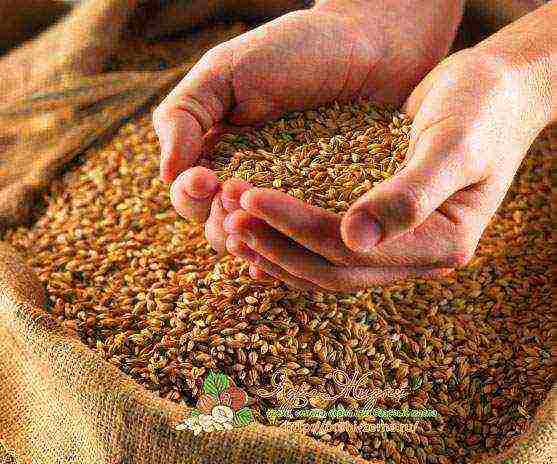
The crushed parts of a wheat crop have a different degree of crushing, and therefore are divided into different categories:
- Wheat groats are the coarsest way to get crushed grains. First they are cleaned and then polished well. There are two main varieties of crushed wheat groats: Artek and Poltava. They differ from each other in particle sizes and processing methods. In Poltava crushed wheat there are also four subcategories with numbers, which actually denote the grain size. All these types are produced in countries such as Armenia, Turkey, Georgia. Shredded wheat in this form is used to create culinary masterpieces such as puddings, casseroles, meatballs and, of course, porridge. Since the degree of grinding of such cereals is very small, it can be additionally ground.
- Semolina is milled wheat without bran with a medium degree of processing. In fact, semolina is also wheat groats, but with a fine grinding and a high level of purification. Since the grains are very small, the product cooks extremely quickly. Most often, semolina is made from hard varieties, but soft crushed wheat can also be found. There are also semolina mixtures, where the solid content reaches 20%.
- Wheat flour is the most crushed agricultural crop. Durum wheat produces flour used to make bulgur and couscous. If the product is formed by hard grinding of soft wheat, flour will work fine for bread. But flour from a dwarf wheat species is used for crumbly baked goods.
Sometimes a common name is used to designate all crushed cereals - a chop. This is a crushed product, partially or completely freed from the shell. It is well absorbed and suitable for making milk porridge.
What does feed wheat mean?
Forage is a plant-based product for feeding livestock in an agricultural environment. This food base is obtained from the fifth grade of wheat, which has a weak grain, suitable only for concentrated feed.
If the wheat variety taken at the beginning contained a lot of cellulose, you can feed the horse and the horned ones. With a reduced content of this substance (that is, a soft wheat variety), fodder goes to feed pigs or birds.
Feed wheat is often included in compound feed because its energy value is quite high. In order to use the product for a longer time, it is first dried, and already in the cold season, it is given to animals.
 Photo: feed wheat
Photo: feed wheat
Feed wheat contains many nutrients and is inexpensive. To determine what sort of grain it is made of, you need to focus on the size of the particles: the larger it is, the better. Animals on such food grow quickly and give active offspring.
But you should not overuse forage, because it contains a lot of gluten and starch, which can cause stomach pains in cattle. And even fodder wheat, when eaten uncontrollably, provokes obesity. Best of all, if it will be no more than 25% of the basic diet of animals.
Wheat has been cultivated by man since time immemorial. It is a very rewarding culture that can be used for a variety of purposes. Previously, only the spring variety was used, today the winter variety has also begun to be in great demand. The resulting new varieties have high yields and excellent grain quality. Winter wheat varieties, their features and disadvantages will be described below in the article.
Main characteristics of winter wheat
Winter wheat is an annual plant from the Cereals family.It is sown in the ground usually in late summer or early autumn. The first shoots appear before winter, but they tolerate cold weather very well. And after the end of winter, they continue to grow until they are fully ripe. At the same time, this species matures much earlier than the spring one. Therefore, it is popular and therefore breeders from different countries have developed a lot of winter varieties over the past few decades.
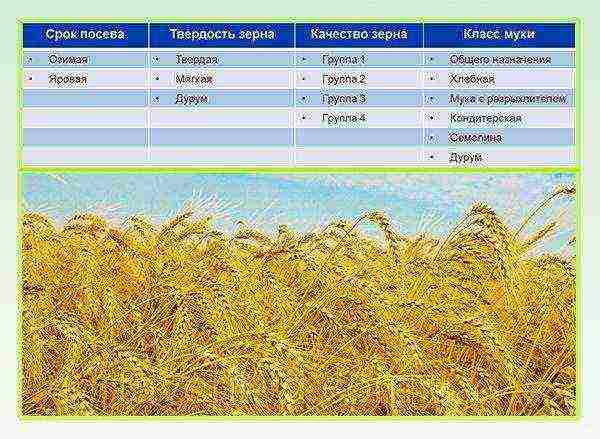 Wheat classification
Wheat classification
It is important to note that there are soft and hard winter wheat varieties.
- Hard varieties prefer drier climates. Their stem is thick, the grains are small, hard, yellow or brown in color. The flour is fine-grained with a high proportion of gluten. Used for making pasta.
- Soft species are grown in humid climates. The stalk is thin-walled, the grains are glassy, mealy, the color can vary from white to dark brown. Wheat flour of this subspecies is crumbly and thin. It is used in the production of bread and confectionery.
The best varieties of winter wheat
Over the past few years, the best varieties of winter wheat have been developed, growing in the middle, southern and northern regions. They are fruitful, produce high quality grain, and are resistant to frost and some diseases.
Detailed description and characteristics of the most popular varieties of winter wheat:
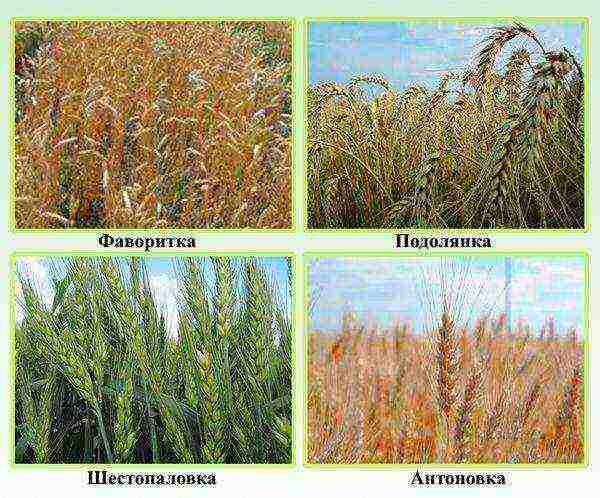 The best varieties of winter wheat
The best varieties of winter wheat
- "Favorite" - a variety of soft wheat. Ripens in 283-287 days. The plant is medium-sized. The weight of the seeds is 0.038-0.043 g, the fiber content is 31-32%. Can withstand severe frosts, but not very drought tolerant, timely watering is also extremely important. Productivity 96-107 kg / ha.
- "Podolyanka" was established in 2003 in Ukraine. Ripens in 305-310 days. The length of the stem with the ear is 95-99 cm. The grains are egg-shaped, red, weighing 0.044-0.045 g each with a high fiber content - 32-36%. The plant is resistant to frost and drought. Productivity 60 kg / ha.
- "Shestopalovka" was introduced in 2007. Refers to the soft variety. Grows up to 85-90 cm in height. Ripening period 280-285 days. Spikelets of dry grass color. The weight of one grain is 0.042-0.044 g, it contains up to 30% of fiber and 14% of protein. Productivity 7-8.5 t / ha. The advantage is resistance to frost, overripe, shedding ears, drought, lodging, diseases.
- Antonovka Ukrainian winter wheat variety, bred in 2008. Differs in rapid growth - 280-285 days before full maturation, survival rate in different territories. The plant is medium-sized, up to 96 cm, it grows very densely. Spikelets are white, without pubescence. The grain weight is 0.036-0.044 g, depending on climatic conditions. It is immune to a complex of phyto-diseases. The varieties survive frosts and droughts without any problems.
- "Kuyalnik" - a variety of Ukrainian breeders, Can give up to 100 centners / ha of crop. One grain weighs up to 0.042 g, egg-shaped, yellow. It is grown in the northern regions, as it is not afraid of frost.
The varieties "Solokha" (yield 80-90 c / ha), "Odessa 267" (72.3 c / ha), "Kherson bezostaya" (57.6 c / ha) are also in great demand.
What are the most persistent varieties?
Cold resistance of winter wheat plays a key role when choosing a variety. If in warm regions this indicator is not important, then in the northern regions the integrity of the harvest for the next year depends on it.
Ukrainian breeders played an important role in the creation of winter-hardy varieties. They were the ones who brought out the world famous "Kharkovskaya 96", "Kharkovskaya 105". They are not picky about growing conditions, they can endure very severe frosts. Moreover, they are grown even if sowing is delayed. In some cases, they are sown after sunflower, and this, as you know, is the worst predecessor of cereals! Under such critical conditions, these varieties can yield a yield of 4-4.5 t / ha.
This should also include "Harus", Astet "," Vasilina "three more winter-hardy species of universal purpose.8.0-8.6 t / ha is the average yield of each of them. This type of grain contains approximately 14.5% protein and 29% gluten.
As you can see, there is plenty to choose from. The above-described winter wheat varieties are a small, but the best share of all existing winter wheat varieties. The described varieties have shown themselves in the best way. They have been tested in different countries and meet the quality criteria.
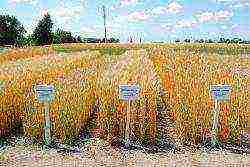
Nowadays, there are a huge variety of wheat varieties, and this fact can hardly surprise anyone. Wheat is the most common grain on earth. Recently, many new varieties of wheat have been bred.
Various varieties are divided into winter and spring varieties. In addition, already winter and spring crops are divided into hard and soft wheat varieties. There are more durum wheat varieties among spring wheat than among winter wheat.
Molded and hearth bread of a wide variety of shapes and types is baked from soft wheat flour. And durum wheat flour is used to make different varieties of pasta and noodles, semolina and other cereals.
Spring wheat varieties
Spring wheat is cold-resistant, its seeds are capable of germinating already at +1 degrees Celsius. For ripening, a temperature of +12 - +13 degrees is enough for it.
In order for spring wheat to give an excellent harvest, it must be planted in a fertilized and weed-free field. The soil for planting should be well hilled and have a neutral pH environment.
You should not delay sowing: if you delay the sowing of spring wheat even for a week, its yield can be greatly reduced.
The best and highest yielding varieties of spring wheat:
- "Saratovskaya-70" (soft);
- Dobrynya (soft);
- "Kharkovskaya-46" (solid);
- "Meljanopus-26" (solid).
Winter wheat varieties
Winter wheat, if planted in well-fertilized soils, gives huge yields. Winter wheat grows very quickly and absorbs well all the moisture of precipitation, including winter. Due to its rapid growth, wheat is good at fighting weeds, so winter wheat has a higher yield than spring wheat.
For good growth and productivity, it is necessary to choose high-yielding and frost-resistant varieties from the huge variety of existing varieties. These varieties include:
- "Moskovskaya-39" (soft);
- "Bezenchukskaya" (soft);
- "Nemchinovskaya-57" (soft).
Wheat (lat. Triticum) is one of the most ancient cereal plants of the flowering division, of the monocotyledonous class, of the order of cereals, of the cereal family.
back to contents ↑ Description of wheat and photos.
All wheat varieties have basic characteristics. The height of the wheat stalk reaches 30-150 centimeters. The stems themselves are hollow and erect, with clearly visible nodes. As a rule, up to 12 stems grow from one plant. Wheat leaves reach a width of 20 mm, they are flat in shape and most often linear, with parallel veins, fibrous, rough to the touch. Wheat leaf sheaths are pronounced and well developed. Split to the very base of the vagina have lanceolate ears at the top. Their tongues are glabrous and membranous, 0.5 to 3 mm long. The wheat plant has a fibrous root system.
back to contents ↑ The structure of wheat, ears.
Wheat inflorescence is a straight, complex spike from 4 to 15 cm long, it can be oblong or ovoid. On the axis of each spike are spike scales 6-15 mm long. Wheat ears are single and adjoin the axis in two identical rows 5-18 millimeters long, with several close flowers, which are most often from 2 to 7. The axis of the wheat spike does not contain joints. The wheat flower has 2 scales and 2 films, 3 stamens, a pistil and 2 stigmas. This structure is typical for the flowers of cereal plants. When wheat is ripe, it bears cereal fruits.
back to contents ↑ Varieties and types of wheat.
There are a lot of varieties of wheat.These plants have a rather complex classification, which includes sections, species and subspecies, as well as about 10 hybrids, both intrageneric and intergeneric. The following types of wheat are distinguished:
- annual
- biennial
Spring and winter wheat - differences.
According to the sowing time, the following are distinguished:
- Spring wheat - sown from March to May, ripens within 100 frost-free days, harvested in early autumn. More drought tolerant than winter wheat, it has excellent baking properties.
- Winter wheat - sown in late summer to mid-autumn, yields early to mid-summer next year. Produces a higher yield, but prefers areas with mild climates and snowy winters.
back to content ↑ Soft and hard wheat.
Types of wheat by grain hardness:
- soft wheat - has a wider and shorter ear and a shorter or absent awn. This type is high in protein and gluten. Flour is made from soft wheat.
- soft spring red wheat - this type includes wheat varieties Altayskaya 81, Voronezhskaya 10, Lyuba, Moskovskaya 35, etc.
- soft spring white wheat - this type includes wheat varieties Novosibirskaya 67, Saratovskaya 55, etc.
- soft winter red-grain wheat - this type includes the varieties Donskaya bezostaya, Obriy, Volgogradskaya 84, Yuna, etc.
- soft winter white wheat - this type includes varieties Kinsovskaya 3, Albidum 28, etc.
- durum wheat - has spikelets that are more tightly fitted with outer films, the grains from them do not crumble, but they are more difficult to isolate. It has a rich yellow color and a pleasant scent. Durum wheat is used to make pasta.
- Durum wheat (durum) - this type includes the varieties Almaz, Orenburgskaya 2, Svetlana, etc.
- durum winter wheat - varieties Vakht, Mugans, Parus, etc. belong to this type.
back to contents ↑ Where does wheat grow?
Wheat grows everywhere except in the tropics, since the variety of specially created varieties allows you to use any soil and climatic conditions. The plant is not afraid of heat, if there is no high humidity, which contributes to the development of diseases. Wheat is a plant so cold-resistant that it is surpassed only by barley and potatoes. Soft wheat prefers a humid climate and is common in Western Europe, Russia and Australia. Durum wheat loves a drier climate; it is grown in the USA, Canada, North Africa, Asia. Winter wheat prevails in areas where it is not damaged by frost, for example, in the North Caucasus, in the Central Black Earth Region of Russia. Spring wheat is grown in the Southern Urals, Western Siberia, Altai.
back to contents ↑ Rye and wheat - differences.
Rye and wheat are among the most popular and irreplaceable cereals. These cereals have similarities in appearance, but also many differences.
- Wheat varieties are much more diverse than rye varieties.
- Wheat is more widely used than rye.
- The grains have a different appearance and chemical composition.
- Wheat is more demanding on soil and climate than rye.
back to contents ↑ Growing wheat.
High yields of wheat are achieved with proper preparation for sowing. The wheat field is cultivated with cultivators and the surface is leveled to ensure good contact of wheat seeds with the soil and obtain simultaneous germination. Wheat is sown to a depth of 3-5 cm with 15 cm row spacing.
Wheat is a very moisture dependent plant, and therefore a good harvest requires regular watering. For dry climates, durum wheat is more suitable, they are less whimsical in terms of moisture. Wheat growth is ensured by the application of fertilizers. The sown wheat is harvested by a combine harvester when the grain is fully ripe.
back to contents ↑ How to germinate wheat grains?
It is very easy to germinate wheat grains at home.The grain must be placed in a 1 liter glass jar. It should occupy no more than 1/4 to 1/3 banks. Add water to the jar almost to the brim, soak the grains for 7-8 hours. After that, drain the water through cheesecloth, rinse the wheat and add fresh water for 3-4 hours. Thus, wheat grains must be washed 2-4 times a day, allowed to drain and then placed back in the jar. In a day, the seedlings will reach a height of 1-2 mm, and the sprouted wheat grains can already be eaten.
back to contents ↑ How to grow wheat at home?
Green wheat germ can be obtained by continuing to soak the grains for another 1-2 days. Sprouts 1-2 cm in size must be transplanted into a container with earth. Sprouted wheat grains are laid on the ground and covered with a 1 cm layer of earth on top. The ground must be watered, but not too abundantly. Wheat sprouts are ready to eat in a few days.
back to content ↑ Useful properties of wheat.
Wheat is a food crop. This cereal is very important for many countries of the world, because of all grain crops, it occupies a leading place in production. Thanks to wheat flour, which is obtained from grains, people make various pasta, confectionery and, of course, bread. Wheat is used in the preparation of vodka and beer, as well as as feed for pets.
The benefits of sprouted wheat grains are very great. Wheat germ is a dietary supplement that contains many vitamins and minerals. With regular use, sprouted wheat grains can improve metabolism, improve tone, raise immunity, and fill the body with energy.
back to contents ↑ Wheat composition.
The chemical composition of wheat is extremely rich in vitamins: the grain contains fiber, magnesium, potassium, zinc, phosphorus, selenium, vitamins B and E, phytoestrogens, pectin and linoleic acid. The beneficial properties of wheat in any form (in the form of bran, grains, flour or seedlings) can hardly be overestimated. It normalizes the level of cholesterol in the human body, improves digestive processes. Due to the presence of phosphorus, wheat stimulates the brain and cardiovascular system. Carbohydrates will provide you with a boost of energy, and fiber will help you lose those extra pounds. This is why wheat bran is so popular in many diets.
Wheat also contains pectin, which has a beneficial effect on the intestinal mucosa. By absorbing harmful substances, it is able to reduce putrefactive processes. Wheat is an antioxidant, it contains vitamin E and selenium, and vitamin B12, which is also found in this plant, is good for the nervous system. Among other things, wheat contains phytoestrogens that reduce the likelihood of cancer. The plant is also beneficial in that it lowers blood sugar and increases muscle tone, this is due to the action of vitamin F and magnesium. Linoleic acid helps the absorption of sugars, proteins and fats. Wheat is an indispensable plant that benefits people in many areas, from the food sector to pharmaceuticals and cosmetics.
back to table of contents ↑ Interesting facts about wheat:
- Wheat is one of the most ancient plants, for more than 10,000 years people have been growing it in their fields;
- Among the ancient Slavs, wheat grains were considered a symbol of wealth, protected from spoilage;
- In 1904, near Ashgabat, wheat grains were found, which were about 5000 years old;
- A wheat field has been depicted more than 10 times by Van Gogh in his paintings;
- British scientists have successfully deciphered the wheat genome, which significantly reduced the time for breeding new varieties and fighting disease.
Did you like the article? Share with your friends:

